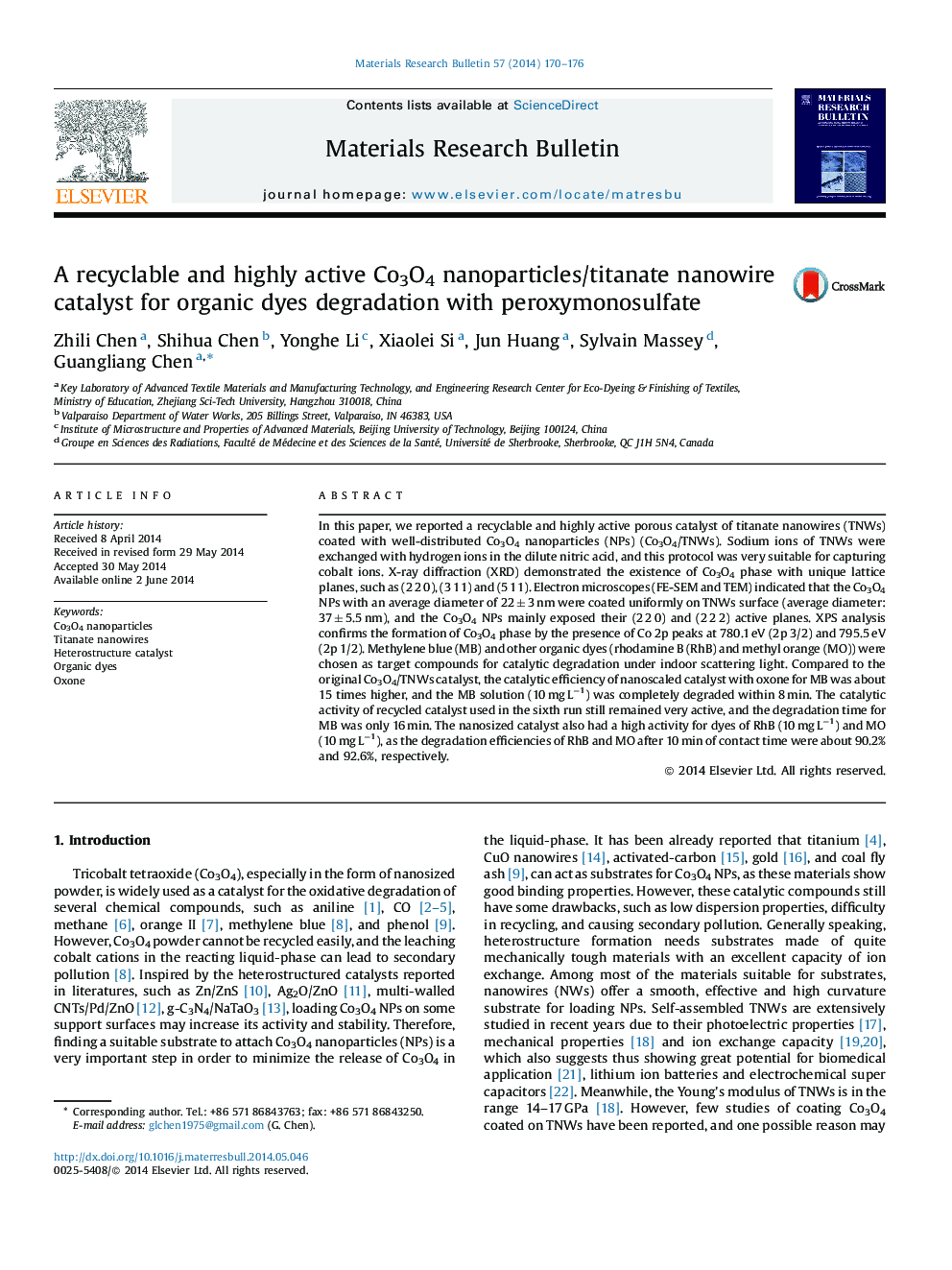| کد مقاله | کد نشریه | سال انتشار | مقاله انگلیسی | نسخه تمام متن |
|---|---|---|---|---|
| 1488263 | 1510718 | 2014 | 7 صفحه PDF | دانلود رایگان |

• Co3O4 nanoparticles were deposited on the pretreated TNWs surface.
• The TNWs treated by hydrogen ions captures higher density of cobalt ions.
• The Co3O4/TNWs catalyst possesses highly efficiency for dyes degradation with oxone.
In this paper, we reported a recyclable and highly active porous catalyst of titanate nanowires (TNWs) coated with well-distributed Co3O4 nanoparticles (NPs) (Co3O4/TNWs). Sodium ions of TNWs were exchanged with hydrogen ions in the dilute nitric acid, and this protocol was very suitable for capturing cobalt ions. X-ray diffraction (XRD) demonstrated the existence of Co3O4 phase with unique lattice planes, such as (2 2 0), (3 1 1) and (5 1 1). Electron microscopes (FE-SEM and TEM) indicated that the Co3O4 NPs with an average diameter of 22 ± 3 nm were coated uniformly on TNWs surface (average diameter: 37 ± 5.5 nm), and the Co3O4 NPs mainly exposed their (2 2 0) and (2 2 2) active planes. XPS analysis confirms the formation of Co3O4 phase by the presence of Co 2p peaks at 780.1 eV (2p 3/2) and 795.5 eV (2p 1/2). Methylene blue (MB) and other organic dyes (rhodamine B (RhB) and methyl orange (MO)) were chosen as target compounds for catalytic degradation under indoor scattering light. Compared to the original Co3O4/TNWs catalyst, the catalytic efficiency of nanoscaled catalyst with oxone for MB was about 15 times higher, and the MB solution (10 mg L−1) was completely degraded within 8 min. The catalytic activity of recycled catalyst used in the sixth run still remained very active, and the degradation time for MB was only 16 min. The nanosized catalyst also had a high activity for dyes of RhB (10 mg L−1) and MO (10 mg L−1), as the degradation efficiencies of RhB and MO after 10 min of contact time were about 90.2% and 92.6%, respectively.
Figure optionsDownload as PowerPoint slideSodium ions of TNWs were exchanged with hydrogen ions, and this protocol was very suitable for capturing high density of cobalt ions. Meanwhile, the fabricated Co3O4/TNWs nano-material presented a highly catalytic and stable activity for dye degradation.
Journal: Materials Research Bulletin - Volume 57, September 2014, Pages 170–176